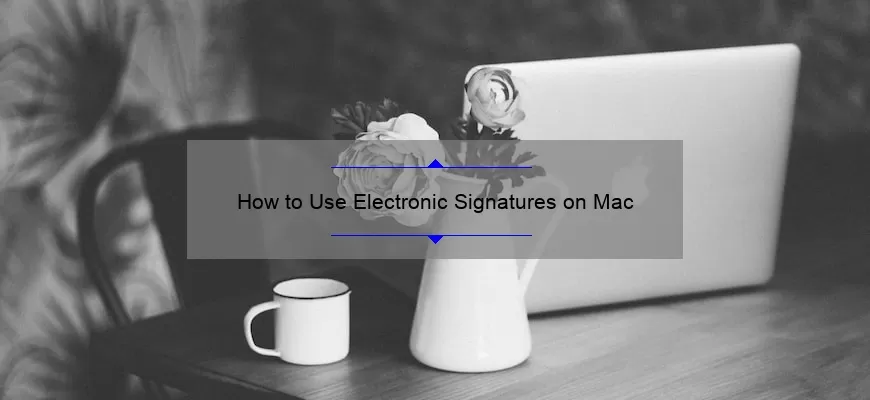What is an Electronic Signature and How Does it Work on Mac?
An electronic signature (eSignature) is a digital representation of a physical signature that can be used to verify the identity of an individual and the authenticity of a document or transaction. Electronic signatures are becoming increasingly popular in the business world as they are a secure and convenient way to authenticate documents and transactions.
Essentially, an electronic signature is a way to prove that a person has actually signed a document. It can be used in a variety of ways, including for contracts, agreements, financial transactions, and more. Electronic signatures are legally binding and are often used by businesses to replace traditional paper-based signatures.
When it comes to how an electronic signature works on Mac, the process is relatively straightforward. Once the document to be signed has been created and saved, it can be uploaded to a secure online platform such as Adobe
How to Create an Electronic Signature on Mac?
Creating an electronic signature on Mac is an excellent way to quickly sign documents and forms without having to print them out, sign them, and then scan them back in. This process can save you time, money, and a lot of hassle. Here’s how to create an electronic signature on Mac:
1. Open the document you need to sign.
2. Click the ‘Tools’ menu and select ‘Annotate’ in the drop-down menu.
3. Select the ‘Signature’ option from the list of available annotations.
4. Click the ‘Create Signature’ button.
5. Choose how you want to create your signature – you can either type it, draw it using your mouse or trackpad, or upload an image of an existing signature.
6.
What Are the Benefits of Using an Electronic Signature on Mac?
Macs are popular not just because of their sleek design and powerful performance, but also because of their built-in security features. Electronic signatures are one way to take advantage of this security, allowing you to sign documents and contracts digitally with a secure signature. If you’re considering using electronic signatures on your Mac, here are some of the benefits you can expect.
1. Increased Security: An electronic signature is more secure than a handwritten signature. It’s impossible to duplicate or forge an electronic signature, ensuring that the signed document is genuine. This makes it ideal for sensitive documents like contracts, legal documents, and other important agreements.
2. Faster Turnaround Time: With electronic signatures, there’s no need to wait for the signed document to be returned via mail. You can send out the document
How Secure is an Electronic Signature on Mac?
An electronic signature on a Mac is an incredibly secure way to sign documents and other digital content. Apple’s Mac operating system takes great care to ensure the security of digital signatures, using a technology called public key cryptography. This type of cryptography involves two distinct keys – a public key and a private key – that interact with one another to create a secure digital signature.
When a document is signed using an electronic signature on a Mac, the public key is used to encrypt the document. This encryption ensures that only the holder of the private key can open and view the document. The digital signature itself is then created using a combination of the private key and a mathematical algorithm, which ensures that the signature is unique and cannot be forged.
In addition to the encryption, digital signatures are also secured with a digital certificate. This certificate is essentially






